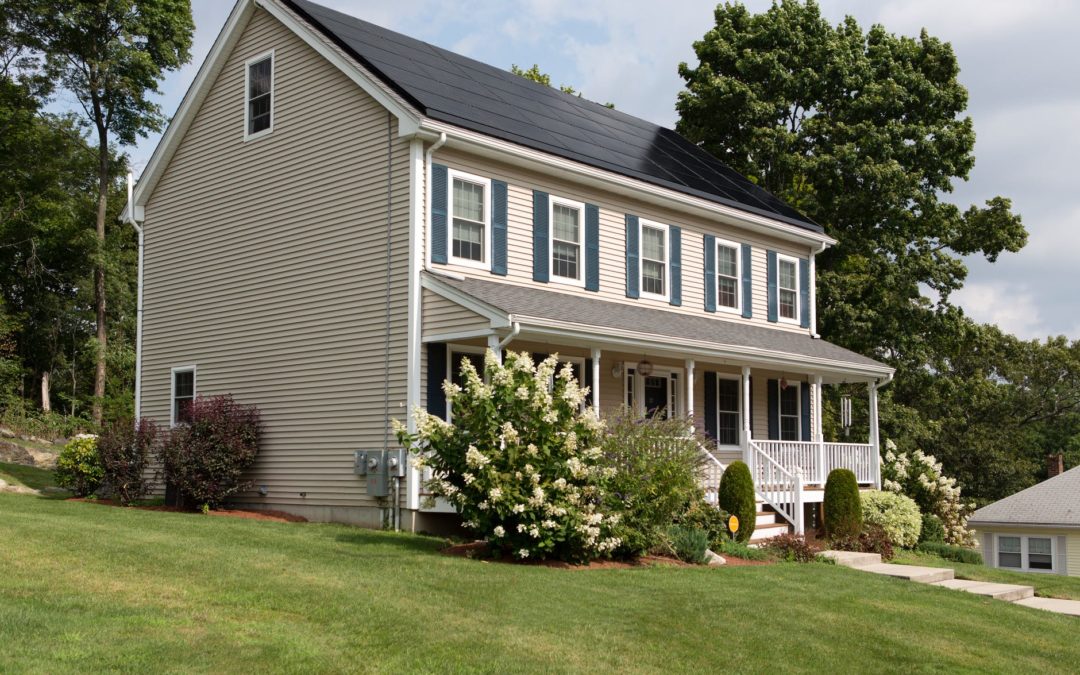When it comes to homeownership, it feels like there are tons of pitfalls. From regular maintenance to all the prepping you have to do for each season, wouldn’t it be easier if there were just a checklist of to-dos? We thought so. That’s why we’ve put together this home energy efficiency checklist — to help you figure out what you’ve done, and what you still need to do to make your home as efficient as possible. Whether you’ve just come out of a drafty winter, or you’re getting prepped for a hot summer, here’s a quick checklist of the top things you can do to save on those home energy bills.
Consider an Energy Audit
If you’re looking for ways to make your home more efficient, it’s always good to start with an energy audit. Your utility provider or your state’s energy department are the best places to go for affordable, professional advice. Some energy providers offer free energy audits, and many states offer tax credits to homes that meet certain energy efficiency standards.
An audit is a low-cost (or free) way to see where your home is doing well, and where you might be able to save a few more pennies. Talking to a professional can also help you find resources you might not have originally considered. Depending on your home and your area, there are often reduced-interest loans for certain renovations or home projects that increase your energy efficiency. An energy audit professional will be able to let you know what you qualify for in your area.
Whether you’ve had an energy audit, or you’re just looking for a few actionable places to start improving your home’s energy efficiency, here’s a home energy efficiency checklist to get you going:
Home Construction Energy Efficiency Tips
- Insulation – If you live in an older home, insulation is always a good thing to check. The better your insulation, the better your home will be able to retain temperature, both in the winter and in the summer. It’s especially good to look into your ceiling insulation, as that’s a top spot for lost energy.
- Attic Venting – While you want the rest of your home to be insulated, it’s important that your attic has proper ventilation. This is what keeps air circulating, saving energy and helping avoid dangerous ice dams in the winter.
- Utility Cut-Throughs – It’s surprising, but some homes have open utility cut-throughs, which are places in your walls or foundation where a technician had to cut a hole to get something like a plumbing pipe into the house. These are places that tend to leak air, so it’s worthwhile to go around your basement and attic to look for gaps you might be able to fill.
- Gaps around Chimneys – The chimney is also a common culprit for energy loss. Over time, chimney flashing can become brittle and start to crack. As the flashing pulls away from the chimney or roof, it creates gaps, allowing not just air in, but also precipitation. It’s worthwhile to have your chimney inspected on a regular schedule — about as often as you have your roof inspected.
Energy Efficient Appliance Fixes
- Refrigerator – If your home has an older refrigerator, consider replacing it. If that thing was made in the 90s, even if it’s still keeping your food cold, it’s probably not helping you out on energy bills. You’ll save more in the long run by buying a new, energy-efficient refrigerator now.
- Washer and Dryer – Washers and dryers can also be big energy wasters. If your dryer is old, this is another one that’s better to just replace. Washers are a little less troublesome, but it’s good to know that you can save a lot by just washing your clothes on the “Cold” setting rather than the “Warm” or “Hot” washing cycles.
- Water Heater – Like any other appliance, a newer model will be the most energy-efficient. If yours is more than 15 years old, it’s time for an upgrade. To save more energy, you can also adjust the settings on your water heater to the warm setting (120° F). That’s plenty warm enough to get your dishes clean, and you don’t have to worry about burning yourself either.
- Heating and Cooling – Most Michigan homes already use more efficient HVAC heating and cooling options, which is great. To make sure you’re getting the most out of your HVAC system, change the air filters regularly (usually in the spring and fall is a good rule of thumb). Having your ducts cleaned on a regular schedule can also help you save.
- Thermostat – There is no home appliance more useful to your home’s energy efficiency than a programmable thermostat. New, smart thermostats work wonders by automatically adjusting your home’s temperature to your daily habits, but a standard programmable one will work too. Make sure you program it to lower the temperature (or raise it, in the summer) while you’re away or asleep.
- Lighting – If you still have old-school incandescent light hanging around your home, switch them out for CFLs or LEDs. Not only do these light bulbs last longer, but they can also save you at least ¾ of the electricity you use with incandescents.
Windows and Doors Are Your Biggest Energy Efficiency Concern
- Weather Stripping – Weather stripping doesn’t always get the credit it deserves. It might not be as exciting as a new door or windows, but it does the trick when you’re trying to save on that energy bill. Make sure your weather stripping is in good condition, especially at the bottom of exterior doors where outside air tends to sneak in.
- Windows – How old are your windows? If they’ve seen decades of use, and are only single-paned, it’s time for an upgrade. Double or triple-paned glass can eliminate drafts in your home, ensuring you’re only spending on heat and air conditioning you’re actually using.
- Door Material – Your exterior doors are also a great place to look for potential energy savings. If you’ve had an old steel door for years, it’s probably not helping you out much. Look for an insulated fiberglass option or solid wood. Both options do a great job of creating a solid barrier between you and the outside of your home.
Daily Habits That Improve Your Home’s Energy Efficiency
- Unplug – As a general rule of thumb: if you’re not using it, unplug it. Things like phone chargers, coffee makers, toasters, and more all draw power when they’re plugged in, even if you’re not using them. You can save a lot by just unplugging them when they’re not in use.
- Adjust your Thermostat – We said it once, but we’ll say it again — adjusting your thermostat can save you bundles. Make sure your thermostat is programmed to go into energy-saving mode when you’re away. To save a little extra, adjusting by just two degrees in the winter and summer can make a huge difference.
- Keep Windows & Curtains Closed in the Winter – If new windows aren’t in your budget this year, you can still find ways to save. Keep your curtains closed for an extra barrier between you and the outdoors, and make sure you’ve locked all the windows. That additional attention goes a long way for your energy bill.
- Turn Out The Lights! – Dads have been saying it since the beginning of time, and they’re right. If you’re not in a room, turn out the lights. This is one of the easiest ways to save energy.
If you’ve just come through a very drafty winter, it might be time to replace those windows and doors with a more energy-efficient option! You’ll want to get your replacement done before summer comes around, so be sure to get in touch with the team at Zeeland Lumber & Supply to find the best window replacements for your home and your budget.


